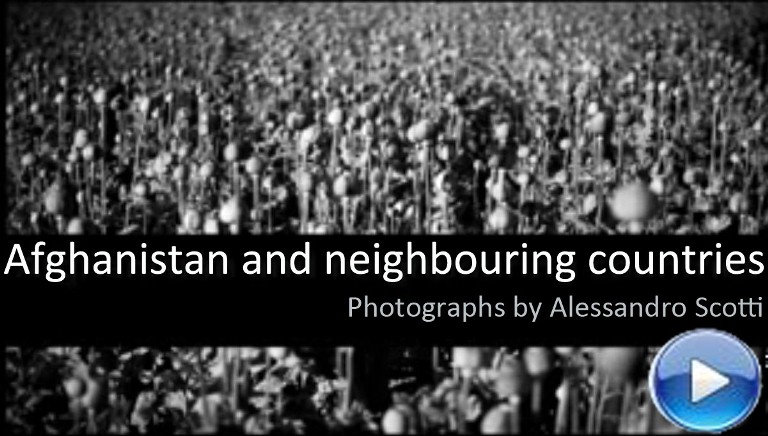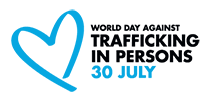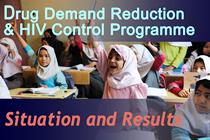INCB: Every dollar spent on prevention can save up to ten dollars
INCB Annual Report:
- highlights the extent of economic and social costs of drug abuse;
- warns of abuse of prescription drugs exceeding rates of "illicit" drug abuse in some countries;
- includes regional trends, shedding light on the spread of 'legal highs' now in almost all regions.
INCB Precursor Report highlights latest trends and challenges in chemical control
VIENNA, 4 March (UN Information Service) - Only one in six problem drug users worldwide - some 4.5 million people - receives the treatment he or she needs, at a global cost of about US$35 billion per year, says the Vienna-based International Narcotics Control Board (INCB) in its Annual Report 2013, launched today in London. Heroin, cannabis and cocaine are the drugs most frequently used by people entering treatment worldwide. The President of INCB, Raymond Yans, noted that investment in prevention and treatment is a wise "investment choice" as it can lead to significant savings in health-care and crime-related costs and alleviate the suffering of drug-dependent persons and their families. Every dollar spent on prevention can save Governments up to ten dollars in later costs. The INCB Report reveals significant regional disparities in treatment provision: in Africa, only one in 18 problem drug users receives treatment, in Latin America, the Caribbean and South-Eastern Europe, one in 11 problem drug users is treated, and in Northern America one in 3.
Prescription drug abuse is a major threat to public health, outpacing the rates for illegal drugs in some countries - INCB warns of widespread availability of prescription drugs
"Take-back days" as part of safe disposal initiatives for prescription drugs are important but not enough to tackle the growing trend of prescription drug abuse, caused by widespread availability of these drugs, says the INCB President. "There is an erroneous perception that prescription drugs are less susceptible to abuse than 'illicit' drugs." Households are the main source of prescription drugs that are no longer needed or used for medical purposes, then diverted for abuse. Surveys show that a significant percentage of individuals abusing prescription drugs for the first time obtained the drug from a friend or family member who had acquired them legally. Prescription drug abuse is a serious and growing threat to public healthinNorth America, which is the region with the highest drug-related mortality in the world. The INCB Report says that prescription drug abuse can only be tackled by addressing the root causes of excessive supply such as "doctor-shopping", overprescribing by medical professionals and lack of control on issuing and filing of prescriptions.
Regional trends - 'legal highs', cannabis legislation and Afghanistan's deteriorating drug problem
Unprecedented numbers and varieties of new psychoactive substances (NPS), often sold as "bath salts", "legal highs" or "plant food", are a major challenge not only in Europe but increasingly in other regions and developing countries too. This growing trend poses challenges for the regulatory and enforcement authorities. The World Health Organization's (WHO) Expert Committee on Drug Dependence is expected to review over 20 new psychoactive substances at its thirty-sixth meeting in June 2014.
Central America and the Caribbean continue to be affected by drug trafficking and high levels of drug-related violence, while large-scale illicit methamphetamine manufacture is a cause for serious concern. The region remains a significant transit route for cocaine to North America and Europe; it is estimated that over 90 per cent of all cocaine trafficked to the United States is of Colombian origin and transits Mexico and the Central American corridor.
There is an overall increase in the trafficking of opiates through Africa. The 10-fold increase in seizures of heroin in East Africa makes this subregion possibly the largest hub in Africa for heroin trafficked onward to the European markets. Heroin is increasingly transiting West Africa, destined mainly to Europe, and is also trafficked to Southern Africa. There is also a potential in Africa for demand-driven expansion in the cocaine market although cannabis abuse continues to be high, nearly double the global average.
Recent developments in legalizing cannabis for recreational use in the Americas, in the US States Colorado and Washington, and in Uruguay, remain a cause of concern for the INCB Board. INCB President: "When governments consider their future policies on this, the primary consideration should be the long term health and welfare of the population." The INCB Board points out that such legislation contravenes the provisions of the 1961 Convention, which limit the use of cannabis to medical and scientific use only.
North America is the region with the highest drug-related mortality in the world with prescription drug abuse a serious and growing threat to public health . South America reached thelowest level in illicit coca bush cultivation since 1999. The cultivation decreased from an estimated 153,700 ha in 2011 to 133,700 ha in 2012.
The manufacture of and demand for heroin in East and South - East Asia continues to be of major concern to the INCB Board. China alone reported having nearly 1.3 million registered opioid abusers in 2012. This increase in demand in China may be driving the increased demand for heroin produced elsewhere in the region.
Afghanistan has a deteriorating drug problem, with its illicit opium poppy cultivation setting new records in 2013, reaching 209,000 ha, an increase of 39 per cent compared with the 154,000 ha in 2012. The country remains the centre of illicit manufacture of heroin and its importance as a source of cannabis resin for the world markets is growing. This situation seriously endangers the aims of the international drug control treaties, the INCB Report says. The Board calls for international cooperative action to resolve the situation and stresses that eradication of illicit opium poppy can only be achieved if relevant laws are fully respected and implemented while sustainable alternative livelihoods are provided in affected areas.
The illicit cultivation of cannabis plants, both in private homes and in larger plantations, is increasing in Europe, facilitated in some countries by the sale of seeds and equipment through the Internet. The large-scale illicit production of cannabis is mostly run by organized crime, yet in some countries, such as the United Kingdom, there is also a move towards multiple small-scale sites of illicit cannabis production. Cannabis is also the most frequently mentioned drug of abuse among those admitted for first-time treatment in Western and Central Europe. New psychoactive substances (NPS) are an emerging drug phenomenon in Eastern and South-Eastern Europe, where they have recently begun to have an impact. While those substances are primarily being transported from Asia, for processing, packaging and distribution in Europe, there are indications of limited manufacture in Europe as well. The Balkan route remains the most commonly used route for drug trafficking in the subregion although the amount of heroin trafficked declined in the past year. Cocaine trafficking routes to Europe are diversified, with some trafficking through the Baltic countries or along the Balkan route, lately the trafficking through ports of the Black Sea is increasing.
Oceania is the only region in which seizures of all the main types of drugs (amphetamine-type stimulants, cannabis, opiates and cocaine) have recently increased, mostly in Australia.
No drugs without chemicals: INCB Precursor Report shows success in international control and reveals challenge of new supply sources
Success in reducing the diversion of precursors chemicals, frequently used in the illicit manufacture of drugs, from international trade to negligible levels means that gaps in controls at the national level are being increasingly exploited by criminal organizations to gain access to the supply of chemicals they need for illicit manufacture of drugs of abuse, INCB warns. Traffickers are also tapping on the potentially vast pool of non-controlled chemicals, often made specially and to order, to circumvent the effectiveness of international control. The INCB Precursor Report identifies the salient trends in the trafficking of precursor chemicals and practical measures that Governments need to take to deny criminal organizations the chemicals they require to manufacture drugs of abuse.
More information is available at: http://www.unis.unvienna.org/unis/en/events/2014/incb_2014.html
* *** *
For further information please contact:
Romana
Kofler
United Nations Information Service (UNIS)
Telephone: (+43-1) 26060-4962
Email: romana.kofler[at]unvienna.org


